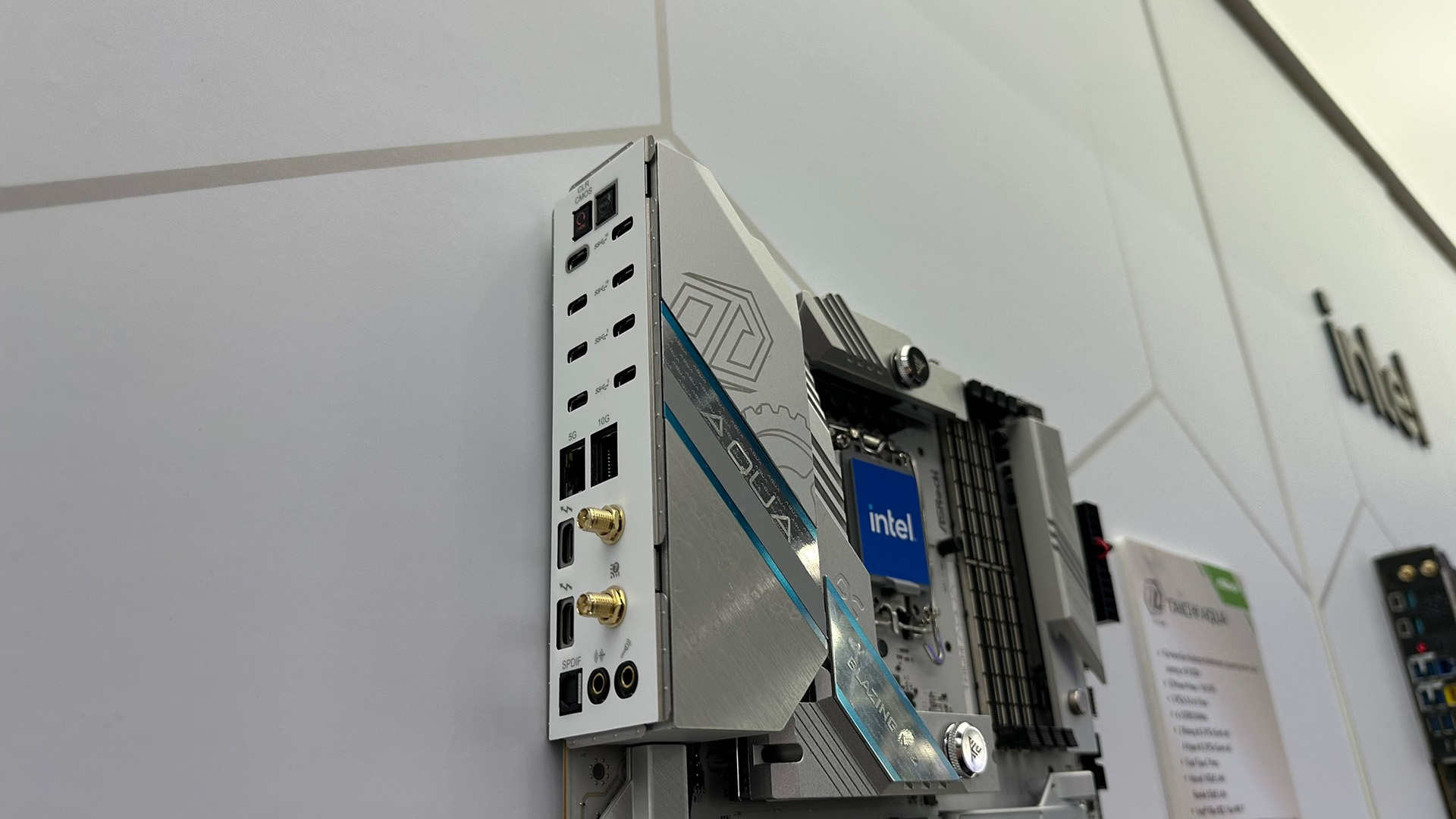
ASRock showcased its next-generation Z890 Taichi Aqua flagship motherboard at Computex, with support for Intel's upcoming Arrow Lake-S processors. By far the most significant change ASRock has made to its future flagship is the complete removal of all USB Type-A ports on the back, replacing them with ten Type-C ports — two of which are Thunderbolt enabled. It provides a glimpse of what the best motherboards could look like in the future when it comes to I/O.
We already discussed most aspects of the new Taichi Aqua in our look at ASRock's upcoming Intel motherboards, but this board deserves special note for its USB Type-C exclusive rear I/O. It's like nothing we've seen on any other motherboard to date, and the removal of all Type-A ports could be a potential drawback for many people — most mice and keyboards still use a Type-A connector, which means you'll need to upgrade or buy a separate USB hub.
In total ASRock's next-gen Taichi Aqua has a whopping ten Type-C ports. Eight are rated for USB 3.2 connectivity, with the final two also supporting the more powerful Thunderbolt 4 and USB 4 standards. However, not all of the USB ports are equal. Four of the 3.2 ports are rated for 10Gbps (aka USB 3.2 Gen 2x1), while the other four are 5Gbps ports (USB 3.2 Gen 1).
That means four of the rear Type-C ports aren't any better than your typical USB Type-A ports. Note also that ASRock's next gen Taichi Aqua does not come with any of the 20Gbps (USB 3.2 Gen 2x2) ports, which is only available in Type-C format, though it perhaps makes up for that with the two USB 4 / Thunderbolt 4 ports. ASRock has not confirmed this yet, but we also don't believe the Type-C ports come with display alt functionality or significant amounts of power delivery, both of which are optional perks of the Type-C form factor.
This is to be expected, as building a board with ten USB 4 ports — or even USB 3.2 Gen2x2 — would be very complex and result in a very expensive motherboard, not to mention the fact that few people would even take advantage of all those maxed out Type-C ports.
USB ports also come from the Intel PCH (platform controller hub), which is linked to the CPU via eight lanes of DMI 4.0 connectivity on current platforms — though Intel could upgrade that to 5.0 on Z890. That means there's a maximum of 16 GB/s of bandwidth between the PCH and CPU, and ten USB 3.2 Gen2x2 ports would top out at an aggregate 25 GB/s — and if those were all USB4 Gen3x2 ports with 40Gbps of bandwidth, that would require 50 GB/s in aggregate.
It will be interesting to see if customers will be swayed by ASRock's Type-C configuration on the new Taichi Aqua. Type-C has grown in popularity since it debuted several years ago, but it's still relatively uncommon to see in desktop peripherals like keyboards and mice.
ASRock could be starting a whole new trend with its Type-C-only motherboard. Greater Type-C adoption in the desktop space would help unify the Type-C form factor on all devices, improving compatibility and reducing waste. Having all devices on Type-C could allow users to ditch clunky adapters and allow more peripherals and devices to work with both desktops and mobile phones. But USB Type-A connectors have proven persistent if nothing else, and aren't likely to ride off into the sunset any time soon.







